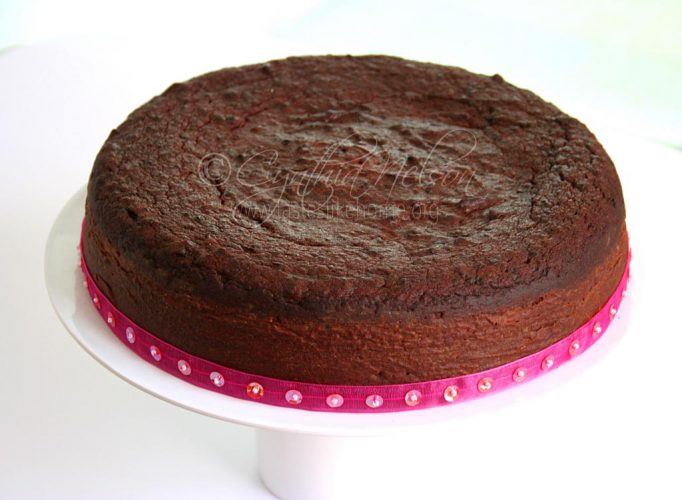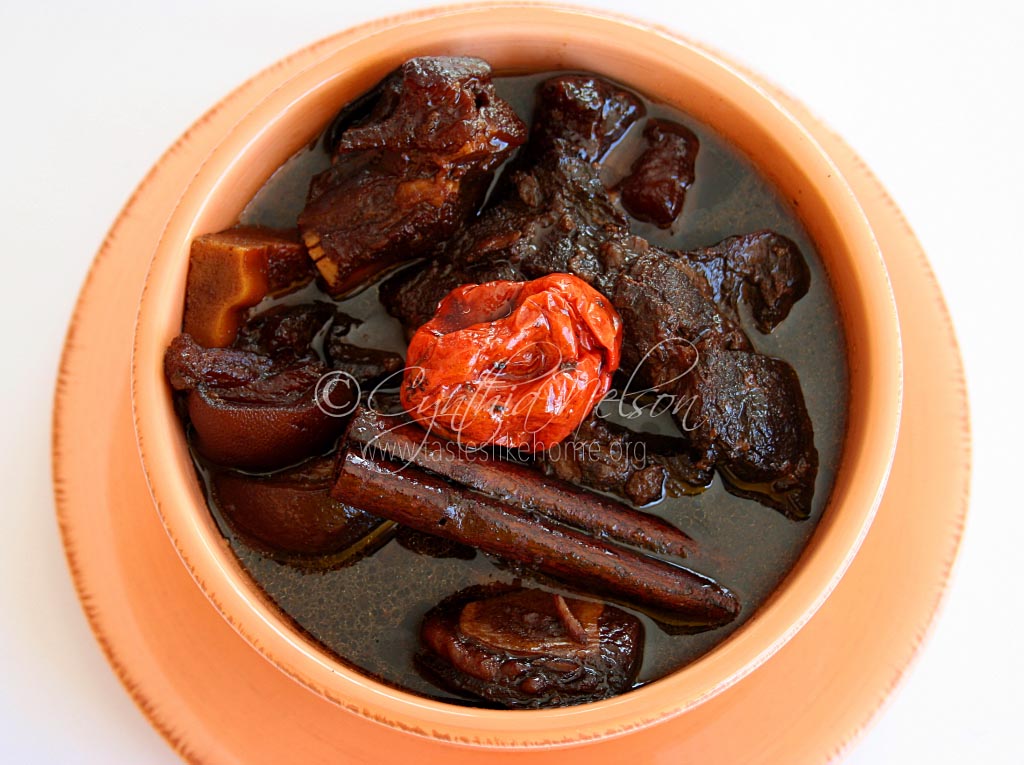 There are lots of things for us to remember as the holidays approach, particularly in the area of food, however, I have identified 12 things that I think we all can benefit from with a reminder. Here they are, in no particular order.
There are lots of things for us to remember as the holidays approach, particularly in the area of food, however, I have identified 12 things that I think we all can benefit from with a reminder. Here they are, in no particular order.
1. Skimming the Pepperpot – This refers to removing the cloudy, foamy residue that rises and settles at the top of the pot when it is about to come to a boil. While it is usually referred to as scum or impurities, it is not harmful nor does it impart any undesirable flavour. However, it can change the look and texture of your sauce (or broth if you were making a broth).
2. De-fat the Pepperpot – We use a lot of various parts of animals (cow, ox, pig) that render a generous amount of fat to Pepperpot. Too much of it can cause digestive issues, therefore, try to de-fat the Pepperpot as much as you can. The easiest way to do it, is after the first initial cooking of the Pepperpot, remove it from the heat and let cool completely at least overnight. The fat will solidify creating a white coating at the top, simply take a spoon and remove it. I do my defatting two ways, when it has come to a boil and after it has been resting overnight. When the Pepperpot has come to a boil, if you notice, there are certain parts of the pot that bubble and other parts that do not. The parts that do not are where the oil has settled. Using a pot spoon or ladle, I scoop off the oil into a bowl.

3. Dark versus light baking tins/pans – Know your baking tins/pans and how they brown so that you understand the kind or results you will get. Dark metal pans absorb and distribute heat more quickly and thoroughly than light-coloured pans. In other words, if you are baking in a dark pan, things are going to cook up and brown faster than if cooked in a light-coloured or aluminium pan. With this in mind, pay attention to the cook times for recipes and work according to the visual and other testing cues offered by the recipe you are using.
4. Parchment paper versus wax paper – Do not confuse the two. Parchment paper, also referred to as baking paper, is a food-safe coated paper that is heat-resistant with a nonstick surface which makes it ideal for baking and a variety of other kitchen tasks. Use it to line your baking sheets and pans if you would rather not grease your pans/tins. Some recipes will still indicate an extra layer of protection for your baked goods by requiring a brush with oil or butter after lining the pan. Do not use wax paper as a substitute for parchment paper. It does not work the same way.
5. If Fried Rice is your main rice dish for the meal, then cook the rice 2 to 3 days in advance and refrigerate it. Everyone knows that the best Fried Rice is made with cold rice. Therefore, give yourself a break by cooking the rice ahead. When you are ready to use it, bring it up to room temperature. I prefer to bring it up to room temperature rather than adding it cold directly from the refrigerator.
6. If Garlic Pork is one of the things you are hoping to make and have on Christmas morning, you should have it set already, or plan to set it today! Ideally, the meat should be marinating/curing for 3 weeks, 2 weeks minimum and this is to ensure that the meat is properly cured to avoid foodborne botulism.
7. Do not glaze the ham too early. Remember the whole point of glazing the ham is to make it look pretty. The glaze is always made with a high sugar content, therefore, adding it too early can cause it to caramelise and burn, making the crust bitter. I’d recommend that you start glazing about 45 minutes before the ham is due to be finished. Do it in 2 – 3 intervals.
8. Positioning the oven rack. Regardless of what you are baking in the oven, pay attention to where the recipe indicates that you place the oven rack or the dish. Some will suggest the upper third of the oven, some the middle and others the lower rack. Each position is recommended based on the cooking temperature required, the contents of what is being cooked (quantity), and the desired outcome. For example, very wet batters are usually cooked in the middle of the oven on lower temperatures. Do not forget to reference the information from a couple of weeks ago – convection versus convention ovens.
9. Resting after cooking. Do not ruin all the hard work you have put into your ham, roasts, cakes, breads, pies etc. by not letting them rest before cutting or slicing into them. Meat should be allowed to rest for at least 30 – 45 minutes before cutting into it. The larger the roast, the longer the rest time. The juices need to redistribute and the meat relax. Cakes need to settle; breads need to relax to maintain their crumb and pies need time to set.
10. Double check all your leaving agents – baking powder, baking soda and yeast – and make sure they are active and fresh.
11. Freshen up and replenish your spice stock. Cloves, cinnamon and nutmeg are 3 hard spices that we use a lot of during the holidays for both sweet and savoury preparations. Let’s be honest, many people only bake and use certain ingredients at this time of the year, so, just like the leavening agents, check that your spice stock is potent.
12. Make the cake, ahead. Like fine wine and great-tasting Pepperpot, a good Christmas cake, Black cake, Rum-fruit cake, gets better with age. Therefore, make the cake at least 3 to 5 days before you plan to serve it. You will notice an improvement in the texture and the flavour.
That’s it for me this week folks!
Be well!
Cynthia
cynthia@tasteslikehome.org
www.tasteslikehome.org





